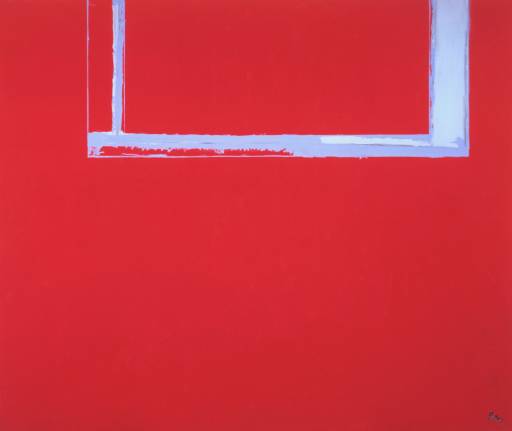Motherwell was born 1915, in Aberdeen, Washington. In 1932 he studied painting briefly at the California School of Fine Arts in San Francisco. He received a B.A. from Stanford University in 1937 and enrolled for graduate work later that year in the Department of Philosophy at Harvard University, Cambridge, Massachusetts. He travelled to Europe in 1938 for a year of study abroad. His first solo show was presented at the Raymond Duncan Gallery in Paris in 1939.
In September of 1940 he settled in New York, where he entered Columbia University to study art history with Meyer Schapiro, who encouraged him to become a painter. In 1941, Motherwell traveled to Mexico with Roberto Matta for six months. After returning to New York, his circle came to include William Baziotes, Willem de Kooning, Hans Hofmann and Jackson Pollock In 1942, Motherwell was included in the exhibition First Papers of Surrealism at the Whitelaw Reid Mansion, New York. In 1944, Motherwell became editor of the Documents of Modern Art series of books, and he contributed frequently to the literature on Modern art from that time.
He preferred using the starkness of black paint as one of the basic elements of his paintings. He was known to frequently employ the technique of diluting his paint with turpentine to create a shadow effect. His long-running series of paintings "Elegies for the Spanish Republic" is generally considered his most significant project. The origin of imagery for the Spanish Elegies is in Motherwell's 1948 black-and-white illustration for a poem by Harold Rosenberg in the avant-garde periodical, Possibilities. After many experiments in these abstract illuminations, the pattern emerged of black vertical and oval shapes against a white backdrop. These forms were reworked over the years until they were painted in monumental scale in the late 1950s, a time of prolific and brilliant activity in Motherwell's career.
1941 Composition
1943 Pancho Villa, Dead and Alive
1944 Untitled
screenprint
screenprint
1955 Je t'aime #11
1957-1960 Elegy to the Spanish Republic # 57
1958 Chambre d'Amour
1958 Iberia No. II
1958 Two Figures
1959 Monster (For Charles Ives)
1961 Elegy to the Spanish Republic #70
1963 Automatic Image #1
1967 Elegy to the Spanish Republic, Basque Elegy
1967 Untitled
lithograph
lithograph
1969 Open #50, In Orange with Black
1969 Open no.122 in Scarlet and Blue
1970 Africa 3
screenprint
screenprint
1973 Collage in Ochre with Blue and Red
1975-1985 Elegy to the Spanish Republic #132
1979 St Michel III
1984 America-La France Variations II
lithograph and collage
1989 Hollow Man series





















I like that, honey
ReplyDeleteThe name of my house is motherwell. Nice and fun???